houston

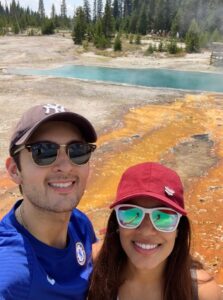 My grandnephew, James Renville, started “the last year of the first quarter of his life” (according to his mom, Toni Chase, who is feeling a little nostalgic these days) by marrying his perfect match, Manuela Ortiz. They really are polar opposites when it comes to their personalities, and that has been just perfect. James was always a quiet man, and Manuela is very outgoing. That’s just what James needed. These days, he is becoming more outgoing, and has even taken up some acting!! Manuela does some videos on Tik Tok, and James has been participating in those. It’s very interesting, and his transformation has been amazing. I think deep down, James has always had a little showmanship in him. He just needed a little help to draw “that guy” out. James loves inline skating and playing pool with his dad, Jim. It is just a couple of ways he unwinds. He is really good on the inland skates and can do some of the tricks some of the professional skaters do. I think that filming those tricks is another way he has been drawn out a little.
My grandnephew, James Renville, started “the last year of the first quarter of his life” (according to his mom, Toni Chase, who is feeling a little nostalgic these days) by marrying his perfect match, Manuela Ortiz. They really are polar opposites when it comes to their personalities, and that has been just perfect. James was always a quiet man, and Manuela is very outgoing. That’s just what James needed. These days, he is becoming more outgoing, and has even taken up some acting!! Manuela does some videos on Tik Tok, and James has been participating in those. It’s very interesting, and his transformation has been amazing. I think deep down, James has always had a little showmanship in him. He just needed a little help to draw “that guy” out. James loves inline skating and playing pool with his dad, Jim. It is just a couple of ways he unwinds. He is really good on the inland skates and can do some of the tricks some of the professional skaters do. I think that filming those tricks is another way he has been drawn out a little.


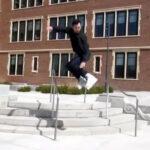
Following their wedding, the kids took a short honeymoon trip to Yellowstone National Park. They had a great time. James has always loved to travel, and so they also took several road trips over the last year to other parks in Wyoming and Colorado. They have just been enjoying their new life together. Now they are getting ready to move to a new place, and they are very excited about that. James is always up for a trip…be it for hiking or just sightseeing. James and Manuela are always game to see new places and do new things.
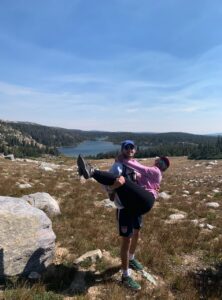
 James also started a new job in the world of Public Relations, and he loves it. It plays into his love of travel too, because his job requires that he travel quite a bit. His job takes him all around the Rocky Mountain region, specifically any states that border Wyoming, but that doesn’t mean that he doesn’t go further. He is headed to Portland, Or3gon in a couple of weeks, and might be slated to go to Houston, Texas next week as well. With James’ love of travel, these trips are awesome indeed, with the only drawback being that Manuela can’t go with him. Still, that makes the reunions that much sweeter for these young newlyweds…even if the time apart is less than ideal. Today is James’ 25th birthday. Happy birthday James!! Have a great day!! We love you!!
James also started a new job in the world of Public Relations, and he loves it. It plays into his love of travel too, because his job requires that he travel quite a bit. His job takes him all around the Rocky Mountain region, specifically any states that border Wyoming, but that doesn’t mean that he doesn’t go further. He is headed to Portland, Or3gon in a couple of weeks, and might be slated to go to Houston, Texas next week as well. With James’ love of travel, these trips are awesome indeed, with the only drawback being that Manuela can’t go with him. Still, that makes the reunions that much sweeter for these young newlyweds…even if the time apart is less than ideal. Today is James’ 25th birthday. Happy birthday James!! Have a great day!! We love you!!
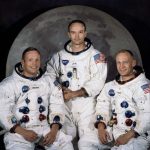 When the Apollo 11 crew landed on the moon, the world waited with unbridled excitement to view the moon rocks they were bringing back. It was an unprecedented event. Never before had man been able to look upon these space rocks. Soon, the astronauts would be treated to a ticker tape parades, and of course, the world tour to tell of their amazing escapades.
When the Apollo 11 crew landed on the moon, the world waited with unbridled excitement to view the moon rocks they were bringing back. It was an unprecedented event. Never before had man been able to look upon these space rocks. Soon, the astronauts would be treated to a ticker tape parades, and of course, the world tour to tell of their amazing escapades.
However, before all that, the astronauts had to do something that every world traveler understands…go through customs. What??? When I read that, I was stunned. Why would they need to go through customs? It’s not like they went shopping on the moon. Then again, they did bring back something they didn’t take with them…moon rocks, moon dust and other lunar samples, according to the customs form filed at the Honolulu Airport in Hawaii on July 24, 1969…the day the Apollo 11 screw splashed down in the Pacific Ocean to end their historic moon landing mission. Nevertheless, NASA had those almost immediately, didn’t they?
Apollo 11 astronauts Neil Armstrong, Buzz Aldrin and Michael Collins hd to declare the things they brought back, just like everyone else, and they had to declare not only their cargo, but also had to list their flight route as starting Cape Kennedy (now Cape Canaveral) in Florida with a stopover on the moon. Then all three men had to sign the form, so everything was legal.
The form was posted to the U.S. Customs and Border Protection Web site in 2009, to mark the Apollo 11 mission’s 40th anniversary. A copy was obtained by SPACE.com and verified by NASA. John Yembrick told SPACE.com that it was indeed authentic, was a little joke at that time, and maybe it was, but the reality is that not much has changed over the years. The big joke was the fact that because Apollo 11 splashed down 920 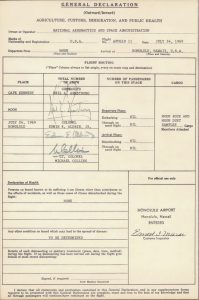 miles southwest of Hawaii and 13 miles from the USS Hornet, the Navy ship sent to recover the crew. It took two more days for the astronauts to actually return to Hawaii on July 26, where they were welcomed with a July 27 ceremony at Pearl Harbor. So customs was a bit delayed.
miles southwest of Hawaii and 13 miles from the USS Hornet, the Navy ship sent to recover the crew. It took two more days for the astronauts to actually return to Hawaii on July 26, where they were welcomed with a July 27 ceremony at Pearl Harbor. So customs was a bit delayed.
Still, the astronauts were trapped inside a NASA trailer as part of a quarantine effort. The concern was the possibility of germs they might have picked up. They had to wear special biological containment suits when they walked out on the deck of the USS Hornet after being retrieved. Then, NASA transported them to Houston, quarantine trailer and all, and they emerged from isolation three weeks later. Today’s returning astronauts exit their spacecraft almost immediately. Some, who have been in space a long time receive medical checks after spending months in the weightlessness of space. Nevertheless, today’s NASA astronauts still have to go through customs, and I still find that quite funny.
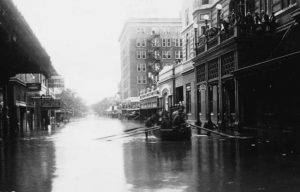 As the world watches, with sadness, the news of the flooding in Houston from Hurricane Harvey, I am reminded of another Texas flood that severely damaged a Texas city. This flood wasn’t from a hurricane exactly, but rather like Harvey, the flooding occurred because of too much rain for the ground to handle. Early that September, the remnants of a Category 1 hurricane brought heavy rains to areas of Mexico, as well as the state of Texas, particularly in the San Antonio area. On September 4, a tropical cyclone had developed in the southwestern Gulf of Mexico near the Bay of Campeche. It moved slowly in a general westward direction. Then, the storm reached hurricane intensity on September 7 prior to making landfall south of Tampico, Mexico the following day. The storm weakened over land, and lost cyclonic characteristics later that day, but a nearby high-pressure area forced the remnants of the system northward into Texas. So it was that was on September 7, 1921 in San Antonio, Texas, after some of the heaviest rainfall ever recorded in Texas…at least up to that time…dumped an astounding 23.11 inches of rain in the San Antonio area in less than a day.
As the world watches, with sadness, the news of the flooding in Houston from Hurricane Harvey, I am reminded of another Texas flood that severely damaged a Texas city. This flood wasn’t from a hurricane exactly, but rather like Harvey, the flooding occurred because of too much rain for the ground to handle. Early that September, the remnants of a Category 1 hurricane brought heavy rains to areas of Mexico, as well as the state of Texas, particularly in the San Antonio area. On September 4, a tropical cyclone had developed in the southwestern Gulf of Mexico near the Bay of Campeche. It moved slowly in a general westward direction. Then, the storm reached hurricane intensity on September 7 prior to making landfall south of Tampico, Mexico the following day. The storm weakened over land, and lost cyclonic characteristics later that day, but a nearby high-pressure area forced the remnants of the system northward into Texas. So it was that was on September 7, 1921 in San Antonio, Texas, after some of the heaviest rainfall ever recorded in Texas…at least up to that time…dumped an astounding 23.11 inches of rain in the San Antonio area in less than a day.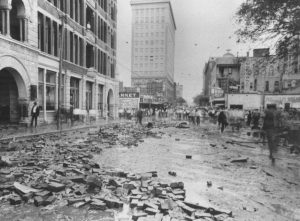
In some areas of Texas, the rainfall was even worse, but those areas somehow didn’t have the same potential for devastating floods. The precipitation peaked over Central Texas, where the highest rainfall amount measured was 40 inches near Thrall, Texas. This was the fourth highest tropical cyclone-related rainfall total in Texas since record keeping began. Similarly, an observation of 36.40 inches elsewhere in Williamson County, Texas ranked as the sixth-highest tropical cyclone-related rainfall total for the state. The high precipitation totals set nationwide records which would stand for several years. Like Hurricane Harvey, that storm stalled and the rain just kept coming.
The immense amount of rain quickly overwhelmed the San Antonio River that winds through southwest Texas. The area is usually pretty dry, but on that September day, the storm that stalled over Taylor, Texas was a 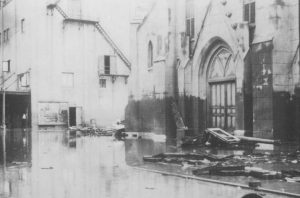 recipe for disaster. It was the heaviest single day of rainfall in the state to that time. Taylor is located 30 miles upstream from San Antonio, so when the flash flood came barreling down, it took aim on San Antonio with a vengeance. Most of the 51 flood victims were trapped in their cars by the surprise flood and drowned. Much like Houston, five to ten feet of water submerged the city’s streets, delaying an evacuation. The city was under water for nearly a week following the flood. The flood damage amounted to at least $5 million in damages in the small city that was San Antonio, at that time. In the aftermath, San Antonio embarked on a 10 year overhaul of its levee system, not knowing for sure that it would really help, but I guess they did what they knew to do.
recipe for disaster. It was the heaviest single day of rainfall in the state to that time. Taylor is located 30 miles upstream from San Antonio, so when the flash flood came barreling down, it took aim on San Antonio with a vengeance. Most of the 51 flood victims were trapped in their cars by the surprise flood and drowned. Much like Houston, five to ten feet of water submerged the city’s streets, delaying an evacuation. The city was under water for nearly a week following the flood. The flood damage amounted to at least $5 million in damages in the small city that was San Antonio, at that time. In the aftermath, San Antonio embarked on a 10 year overhaul of its levee system, not knowing for sure that it would really help, but I guess they did what they knew to do.
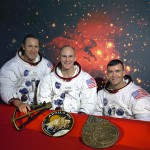 By the late 1960s, space travel had become a pretty common story for the people of the United States. NASA had enjoyed a relatively accident free space travel history, having only lost three astronauts, and that was a fire on the launch pad during training. So, when it came to Apollo 13 going to the Moon, which had been done twice before, the networks decided that it was boring, and opted not to televise the program…until disaster changed everything. For me, it seems impossible that anyone could think that space flight is boring, but someone at the top ranking position in the media, had made an executive decision, so that was the end of it.
By the late 1960s, space travel had become a pretty common story for the people of the United States. NASA had enjoyed a relatively accident free space travel history, having only lost three astronauts, and that was a fire on the launch pad during training. So, when it came to Apollo 13 going to the Moon, which had been done twice before, the networks decided that it was boring, and opted not to televise the program…until disaster changed everything. For me, it seems impossible that anyone could think that space flight is boring, but someone at the top ranking position in the media, had made an executive decision, so that was the end of it.
On April 11, 1970, Apollo 13, the third manned lunar landing mission was launched from Cape Canaveral, Florida, carrying astronauts Jim Lovell, Jack Swigert, and Fred Haise. If you’ve ever seen the movie “Apollo 13”, you will know that Jack Swigert had replaced Ken Mattingly, who had been exposed to the German measles. Ken would never get the measles, but rather was a part of the NASA team effort that worked to bring the stranded astronauts back home safely. The crew planned to land on the Fra Mauro highlands of the moon, but two days into the mission, disaster struck when oxygen tank number 2 blew up in the spacecraft, after Jack Swigert was told to preform a cryo stir procedure to the oxygen tanks…a routine maintenance procedure. Then, Swigert uttered those now famous words, “Houston, we’ve had a problem here.” After evaluation, it was determined that the normal supply of oxygen, electricity, light, and water had been disrupted. Their mission to land on the Moon was over, and now they had a new mission…survival!!
Suddenly the news media was very interested in this mission. A successful mission was boring and not news worthy at all, but one in which fatalities might occur, is very interesting. Sad really…when you think about it. The television stations were supposed to broadcast a segment the crew did about life in space, but while the crew did their segment, the stations decided not to broadcast it for lack of interest. Nine minutes later, when disaster struck, everyone was suddenly very interested. I guess I just don’t understand why we would rather watch news about a disaster, than a successful space mission. I don’t think there is anything common about space travel, and yet, it goes on a lot in our world, completely without notice.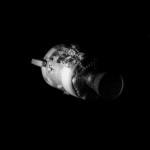
Once the disaster began, the world watched anxiously, praying for the safe return of these brave men. The broken vehicle could not make the trip, and they would have to use the lunar landing module, Oddesy to get them home. They limped along, making the necessary “MacGyver” like connections and adjustments to allow them to have enough oxygen. They made “controlled burns” using the Earth as a guide. Not very controlled at all. It took tremendous effort on the parts of many people, but it all paid off, when on April 17, tragedy turned to triumph as the Apollo 13 astronauts touched down safely in the Pacific Ocean. It was a successful failure, in that no lives were lost.
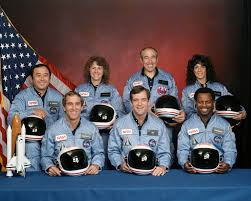 Every time disaster strikes, it seems like we always remember where we were and what we were doing the moment we found out about it. Moments like September 11, 2001, the Kennedy assassinations, Reagan’s shooting, and for me, the Space Shuttle Challenger explosion, are permanently imprinted on my mind. It had been so well televised. It was to be the first time an American civilian was going into space, and she was a teacher. It was an exciting event for America, and especially for the schools and the school children, who felt like they were suddenly center stage within the space program. The nation watched as the Teacher in Space candidates went through the paces to decide which teacher would be chosen. Finally the decision was made, and out of all the candidates, a woman, Christa McAuliffe stood alone as the chosen one. It was exciting for her, the school where she taught, and her family. It was excitement mixed with anxiousness, because there was always that element of danger, that you know is possible, but you never really believe would come to pass…until it does.
Every time disaster strikes, it seems like we always remember where we were and what we were doing the moment we found out about it. Moments like September 11, 2001, the Kennedy assassinations, Reagan’s shooting, and for me, the Space Shuttle Challenger explosion, are permanently imprinted on my mind. It had been so well televised. It was to be the first time an American civilian was going into space, and she was a teacher. It was an exciting event for America, and especially for the schools and the school children, who felt like they were suddenly center stage within the space program. The nation watched as the Teacher in Space candidates went through the paces to decide which teacher would be chosen. Finally the decision was made, and out of all the candidates, a woman, Christa McAuliffe stood alone as the chosen one. It was exciting for her, the school where she taught, and her family. It was excitement mixed with anxiousness, because there was always that element of danger, that you know is possible, but you never really believe would come to pass…until it does.
I was disappointed that I had to bowl on the morning that had been chosen for the launch of the Challenger. I had hoped that I could catch some of it on the television set the bowling alley had. As secretary of the league, I 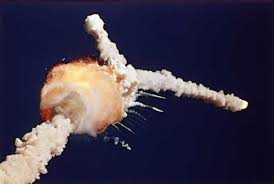 had duties to perform when I got there, but I was immediately approached by one of the bowlers, who said, “Did you hear that the space shuttle exploded?” It was so unthinkable, that my mind first thought that it exploded before anyone was in it, but deep down, I knew that this was a huge disaster. I prayed that some of them would live through it, while knowing in my heart, that they could not have lived through it. It was hard to bowl that day, but there was nothing else we could do. The televisions were on, and we watched as the explosion was played over and over again. Then we went home, and watched more of it at home. Sometimes, I think that people have a tendency to think that if they watch a disaster over and over, that maybe somehow it will have a different outcome…as irrational as that sounds.
had duties to perform when I got there, but I was immediately approached by one of the bowlers, who said, “Did you hear that the space shuttle exploded?” It was so unthinkable, that my mind first thought that it exploded before anyone was in it, but deep down, I knew that this was a huge disaster. I prayed that some of them would live through it, while knowing in my heart, that they could not have lived through it. It was hard to bowl that day, but there was nothing else we could do. The televisions were on, and we watched as the explosion was played over and over again. Then we went home, and watched more of it at home. Sometimes, I think that people have a tendency to think that if they watch a disaster over and over, that maybe somehow it will have a different outcome…as irrational as that sounds.
This whole disaster gave me a different view of the space shuttle, and so when we had the opportunity to visit the Johnson Space Center in Houston, Texas, I found the view of the space shuttle, and all it’s inner workings to be the most interesting. Standing inside the shuttle display, I felt a mixture of excitement and a little dread. It wasn’t that I was concerned for me, but rather that the Challenger’s lost astronauts came back to my mind. I felt a tiny bit of their excitement, and yet I knew that they would never get to fully live their dream, but would die  tragically just 73 second into the flight. Just a little over a minute into their dream. So close, and yet so suddenly it was over…forever. There would be no second chance for them, and this event would bring a lasting emptiness to their families. Events like these scar the people of nation. We may not think of them every day, but when we are reminded of them, such as today, on the 29th anniversary of the event, we can’t help but to be taken back to the day of the event. We can vividly picture each and every second of it, knowing that the loss of life is enormous…knowing that not only are those who died, gone from their families now, but the families are left to pick up the pieces. And we are left remembering exactly where we were when we heard the tragic news.
tragically just 73 second into the flight. Just a little over a minute into their dream. So close, and yet so suddenly it was over…forever. There would be no second chance for them, and this event would bring a lasting emptiness to their families. Events like these scar the people of nation. We may not think of them every day, but when we are reminded of them, such as today, on the 29th anniversary of the event, we can’t help but to be taken back to the day of the event. We can vividly picture each and every second of it, knowing that the loss of life is enormous…knowing that not only are those who died, gone from their families now, but the families are left to pick up the pieces. And we are left remembering exactly where we were when we heard the tragic news.

